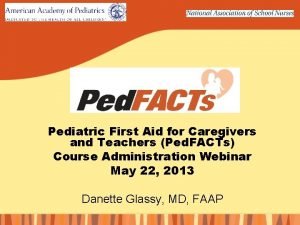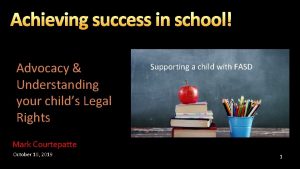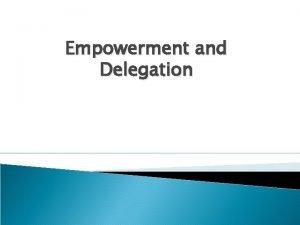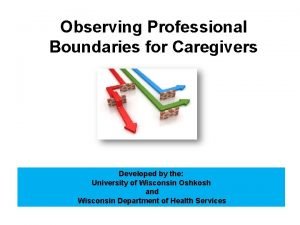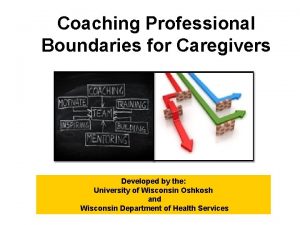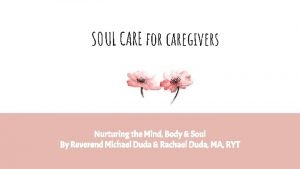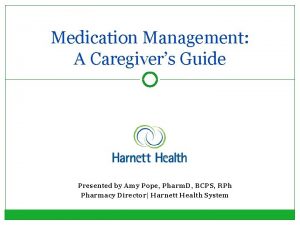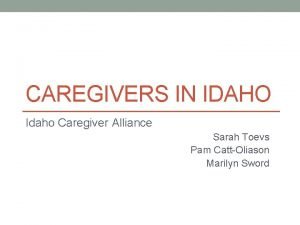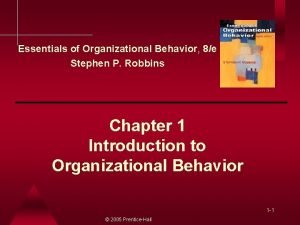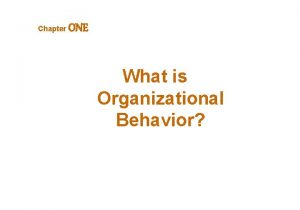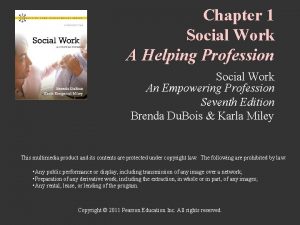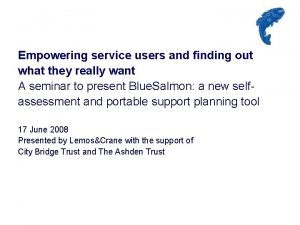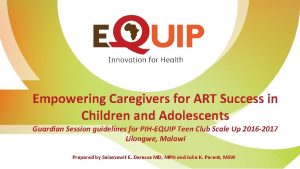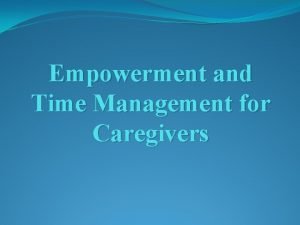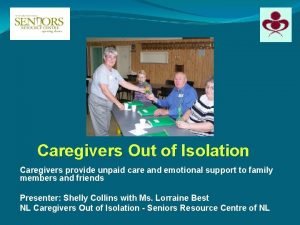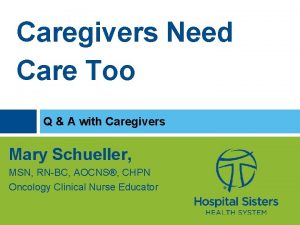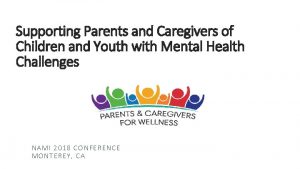Empowering Caregivers for ART Success in Children and






















- Slides: 22

Empowering Caregivers for ART Success in Children and Adolescents Guardian Session guidelines for PIH-EQUIP Teen Club Scale Up 2016 -2017 Lilongwe, Malawi Prepared by Selamawit E. Deressa MD, MPH and Julie K. Parent, MSW

Outline • Conducting the caregiver sessions • Adherence q What is it and Why is it important q Adherence and Adolescents • Disclosure? q What is it? q Benefits q Barriers q Timing q Process q Impact • Information about the Teen Club model • References

Conducting Caregiver Sessions • Invite 25 -30 caregivers • Plan for 2 -3 hours of open discussion using this PPT as a guide to facilitate the session • Find a private meeting area to conduct the session • Guardian Sessions can be done on: • The same day as teen club, but in a separate room, or on another convenient day • Provide refreshments for caregivers • Explain the benefits of adherence and disclosure, address barriers, answer questions and provide guidance • Discuss the availability of health care worker to assist with disclosure • Explain the basic of Teen Club model

Session Topic: Adherence The following information can be use to guide the discussions with the caregivers: Adherence: • Why is adherence to ART important? • To understand this, caregivers need to know: How HIV replicates in the body and How ART works to restore immunity?

What does HIV do to the immune system? • When the HIV virus first enters the body, it crosses into CD 4 (Immune Cells) and produces millions of new viruses • The CD 4 cell then dies and the new viruses are released into the blood to infect new uninfected CD 4 cells • This process continues in vicious cycle until the majority of the CD 4 cells are gradually killed (Low CD 4 Count) • Then the person becomes immuno-deficient and susceptible to opportunistic infections or AIDS related cancers

How Does ART Work? • ART is a combination of antiretroviral medications that work together to make the HIV “sleep” • ART does not cure HIV • ART only prevents the virus from producing more copies and destroying the CD 4 cells • When the virus is asleep, the CD 4 cells reproduce and increase in number • The immune system is restored again and the person will be able to fight diseases • To keep the virus “asleep”, ART must be taken at the right time, at the right dose, everyday for LIFE

What is Adherence to ART? Adherence to ART is: taking the right dose, at the right time, everyday for life, and attending scheduled clinic visits regularly

Why is Adherence to ART important? (1) • In order for the virus to remain suppressed, there should be an optimal level of ART drugs in the blood • This can only be achieved by a very good adherence • Non- adherence leads to sub-optimal level of ART in the blood, which then allows the HIV virus to resume replication • Viral replicates in the presence of ART, results in genetic mutation which protects the virus from the current drugs • HIV virus can become resistant to ART very quickly • Only a few missed does, just 1 -2 missed dose per week, has the highest risk of developing resistance

Adherence and Adolescents • Transitioning from childhood to adulthood is challenging, with personal responsibility, relationships and life plan • Adding HIV and adherence to this challenging time makes these years much more difficult • Children and teens need to understand the importance of adherence when they have been disclose of their HIV status, to help them adhere to medication • Approach adherence counseling with teens cooperatively • Work with teens to problem solve difficulties and help them achieve good adherence

Examples of Barriers to Adherence • Lack of family support • Lack of stable home environment • Moving homes frequently • Lack of money for transport • Boarding school • School holiday • Unexpected guests at home • Unexpected stays away from home

Adherence Counseling for Teens (2) § During adherence counseling for teens: • Ensure they understood why they are taking the medication • Praise their efforts and attempts at good adherence • Discuss and find out when they are most likely to miss their medication • Work with the teen to help the TEEN identify methods that are most helpful reminders. • The Health Care Worker or Lay Worker should offer suggestions, but the final choice must be made by the teen

Session Topic: Disclosure • Disclosure means revealing to a child or adolescent that either they or their caregiver is HIV+. It is a process of adjustment in understanding HIV and the life challenges it poses(3). Disclosure is a series of conversations over time 4). • Non-disclosure o No information about HIV is given, even if the child asks o Questions are deflected, ignored or only general information is given • Partial-disclosure o Some insight is given about health status, but without mentioning HIV or ARVs • Full-disclosure o Honest and full information about HIV is provided and discussed

Benefits of Disclosure (3 -7) • Greater understanding about HIV • Prevents accidental disclosure • Extended discussions about HIV in the family • Improved adherence and clinic attendance • Fulfilling the right to know about issues concerning personal health • Improved coping mechanisms and relief from the stress of hiding HIV • Active participation in treatment • Responsible sexual behavior • Making it acceptable to talk about HIV reduces stigma • Increased support to infected parents • Acceptance of HIV+ people

Barriers to Disclosure (3 -7) Parents and Caregivers: x Discomfort discussing HIV with children x Lack of knowledge, skills or emotional preparedness x Not wanting to worry or upset children x Perception that children will not understand or cope well x Expecting behavior problems or damaged relationship x Concerns that children will live in fear of death or dying x Feelings of shame and guilt x Fears of being judged by the child x Fears of stigma or rejection if the child tells others Health Care Workers: x Inadequate knowledge or counselling skills

When to Disclose (3, 4, 7) • When a child starts asking questions about their illness or medications, it is a good time to start with gradual disclosure • Consider the child’s level of cognitive development and their ability to understand what is being said • Younger children should be informed gradually, accommodating their emotional maturity and preparing for full disclosure • School age (6 -12) children should be told if they are HIV+ (WHO)

The Process of Disclosure (7) • Direct To support children with adherence to ARVs, caregivers may tell the children directly that they are HIV+ • Third-party or Assisted Approach A parent or caregiver requests assistance from a health care worker or family members to help with disclosure

The Role of Health Care Workers (3, 6) • Encourage testing of all family members (index case testing) • Support decisions on when to disclose - respect the family’s timing • Educate caregivers and equip them with skills and materials, including on how to answer uncomfortable questions (ie. sex) • Assist parents to deliver honest age appropriate facts about HIV • Encourage acceptance of status and adherence • Give detailed explanations of issues related to disclosure • Facilitate the process by assuring privacy, confidentiality and support

After Disclosure (3 -7) Parents: • Relief from finally explaining the illness • Unhappiness, depression, guilt, regret, or uncertainty if children act differently after disclosure Children: • A range of negative emotions including fear, anger, disbelief, sadness, or depression • Crying, followed by relief • Improved adherence and better attitude towards treatment

Teen Club Basics • PIH-EQUIP Teen Clubs are adolescent friendly ART Clinics that offer all the clinical services of a weekday ART Clinic but it is done on a Saturday to avoid disrupting school attendance. • Teen Clubs are peer support groups and information sharing forums for adolescents living with HIV (fully disclose of their HIV status) • Purpose of teen club: • To provide a safe, welcoming and nurturing environment • To develop and reinforce good habits and ensure healthy transition into adulthood • To provide quality care for adolescent living with HIV

Services provided during Teen Club: • Clinical Services: Vital Signs, ART Refills, Consultations, Viral Load Testing, Sexual Reproductive Health Information • Psychosocial Services: Adherence Counseling, Guardian Support (if needed), Partner Disclosure • Education: Staff, Volunteers and/or Mentors will prepare and provide one session from the Baylor Curriculum • Recreational Activities: Balls, Board Games, Music, Crafts, etc. • Refreshment: A snack and/or beverage

References 1. www. who. int (Use of ART in Adults and Adolescents) 2. Baylor College of Medicine International Pediatric AIDS Initiative- Malawi Teen Club Curriculum(Part 1) 3. Guideline on HIV disclosure counselling for children up to 12 years of age, World Health Organization 2011 4. Patterns of Disclosure of HIV- Status to Infected Children in a Sub-Saharan African Setting Lara M. E. et al. J Dev Behav Pediatr. 2011 May; 32(4): 307– 315. 5. Disclosure of HIV status to children in resource-limited settings: a systematic review, Vreeman RC et al. Journal of the International AIDS Society 2013, 16: 18466 6. A model for HIV disclosure of a parent’s and/or a child’s illness Gachanja and Burkholder (2016), Peer. J, DOI 10. 7717/peerj. 1662 7. Determinants and processes of HIV status disclosure to HIV - infected children aged 4 to 17 years receiving HIV care services at Baylor College of Medicine Children’s Foundation Tanzania, Centre of Excellence (COE) in Mbeya: a cross-sectional study Mary S. Nzota, corresponding author Joseph KB. Matovu, Heather R. Draper, Rose Kisa, and Suzanne N.

Thank you!
 Pediatric first aid for caregivers
Pediatric first aid for caregivers Your child's success or lack of success
Your child's success or lack of success Your child's success or lack of success
Your child's success or lack of success Empowering and delegating
Empowering and delegating Difference between delegation and empowerment
Difference between delegation and empowerment Zone of helpfulness
Zone of helpfulness Observing professional boundaries for caregivers
Observing professional boundaries for caregivers Polyvagal
Polyvagal Caregivers guide to medication
Caregivers guide to medication Idaho caregiver alliance
Idaho caregiver alliance Quotes about empowering youth
Quotes about empowering youth Empowering people in ob
Empowering people in ob Empowering people in ob
Empowering people in ob Basic ob model stage 2
Basic ob model stage 2 Empowering people acer
Empowering people acer Empowering minds curriculum
Empowering minds curriculum Empowering business
Empowering business Empowering imagination
Empowering imagination Filipino advocacy using ict
Filipino advocacy using ict Social change in social work
Social change in social work Empowering service users
Empowering service users Writers notebook examples
Writers notebook examples Monetizing energy data
Monetizing energy data
